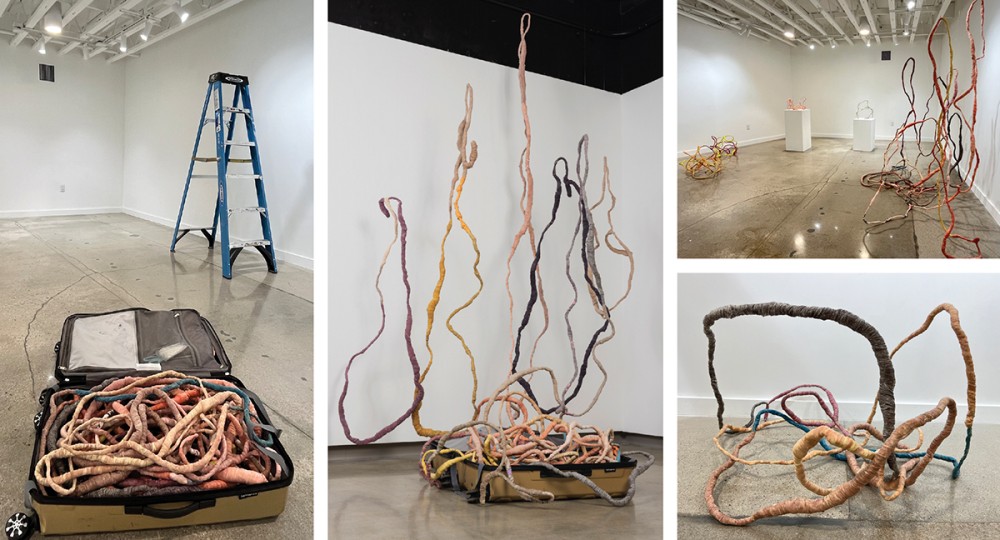Young-Ly Hong Chandra’s
What Upholds Us

All images used by permission of the artist
In a world burdened by felt dislocations and actual displacements, Seoul-born Young-Ly Hong Chandra’s latest work responds to the discontinuities of her own migratory patterns. The artist’s intentional place-making inscribes spaces with sculptural arabesques evocative of swinging tree branches or twisting, gnarled roots. Roots for the rootless.
Simone Weil interprets such invisible subterranean forms as history sustaining present and future arms. Hong Chandra’s long, drawn-out forms—made of repurposed T-shirts and packaging materials—also allude to hidden internal body matter such as bones, tissues, and veins. The cotton medium also references fast fashion’s unseen workforce: the fruit of their labors are entwined into Hong Chandra’s installations, in which cords demarcate invisible walls, doorways, windows. She refers to these portals as the eyes of trees.
Thus, What Upholds Us invites a type of spiritual seeing negotiated through nature and handiwork. The art obliges a reexamination of spatial, temporal, and social discrepancies to grasp what upholds us. Seeing gains seeds of divine wisdom deeply deposited in earthly matters. The artist’s flexible pieces also impart the value of malleability for transformation. As Hong Chandra regularly travels between Malaysia and the United States, the art complies with the perimeters of a suitcase. Through art, chaos is grasped, modulated by rhythms of making and then packing, exhibiting, and repacking.




